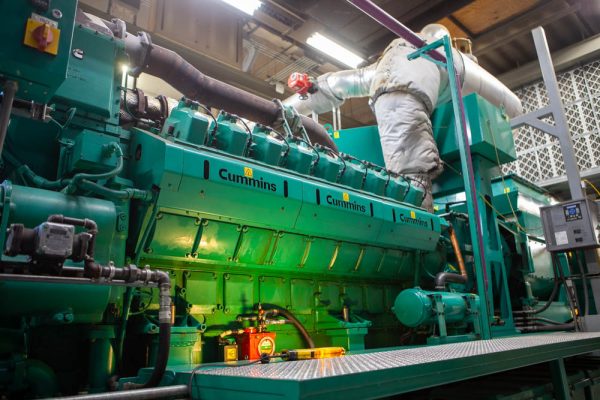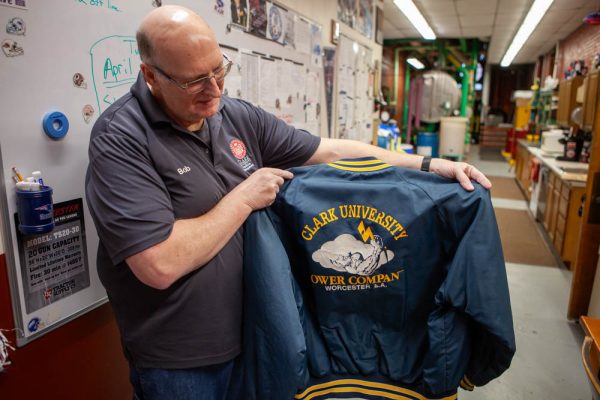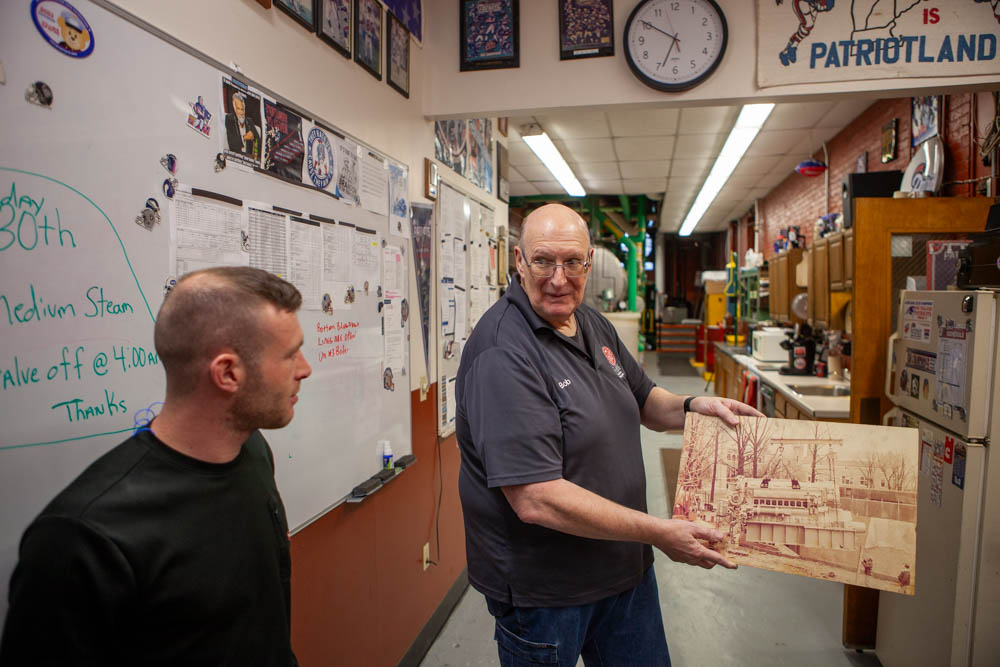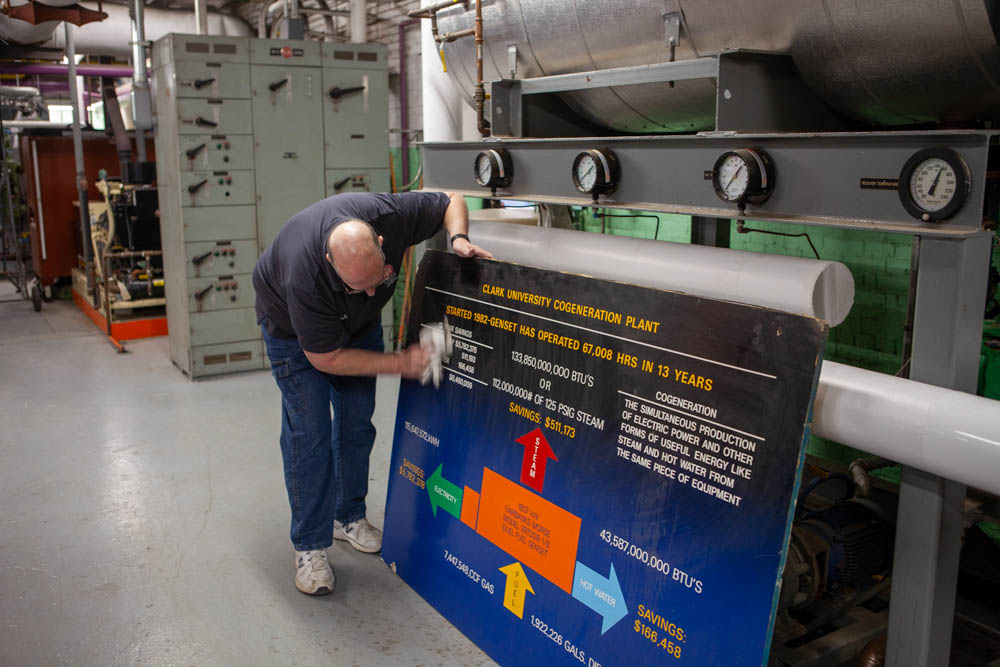When classes start, Jonas Clark Hall is abuzz with activity – and it’s not just in the classrooms and offices. Students arrive on campus and a steady, rumbling hum emanates from the basement. It’s from the beating heart of Clark’s campus, in the Central Utility Plant.
The source of noise is an 18-cylinder, 2,000-kilowatt Cummins engine. The huge machine is used for cogeneration. This means that it burns natural gas to produce electricity, while excess heat is captured to contribute to Clark’s steam and hot water networks.
Together with three large boilers, the Central Utility Plant satisfies most of the University’s space heating and hot water needs. And when classes are in session, about three-quarters of Clark’s electricity needs are met by the cogeneration engine.

Plant History
Clark’s original cogeneration facility (which burned diesel as well as natural gas) was an advanced, national model of efficiency when it came online in 1982. The University’s system was one of the first in the country, and ever since, Clark’s Central Utility Plant has been considered an industry leader. The original engine was replaced in 2013 due to concerns about age and efficiency.
The work done here, as Clark’s Human Resources describes it, is an “essential service” to the campus community. That means occasionally working on holidays, or at 3 a.m., or when the University is closed.
While the plant is fully online – outside of the summer months – it is staffed 24 hours a day by operators who monitor the university’s heating and electrical needs and make adjustments when necessary. Clark’s energy independence affords it a certain amount of bargaining power with the power grid. When the Plant produces excess electricity, it can be sold to the grid – and when needs are high, Clark buys from the grid.
The vast majority of maintenance work and repairs are done in-house. Chief Engineer Mark Leahy, a well-respected authority on cogeneration, has organized his staff and the facility to make sure of it. The Plant maintains its own welding room, filled with an expansive and carefully organized stock of spare parts. An inventory of chemicals is kept to run tests and maintain the engine.
A Visit to the Central Utility Plant
After I was introduced to the facility through a class with Prof. Chris Williams about getting to net-zero carbon emissions, I became curious about what it took to run this critical piece of campus infrastructure.
For my final project in Intro to Digital Photography, I decided to ask Leahy if I could use the Central Plant and its employees as my subjects. Leahy was kind enough to arrange a visit, where I met Bob Brazawskis ’86, a long-time plant employee and Clark alum, and Deverton Beauvais, a new hire.
I snapped the pictures as the pair toured me around the facility. In total, there are four plant operators (they’re hiring now for a per diem position, if you want to join the team). Together with Leahy, the Plant’s employees have made their workplace a second home. The walls are covered in decades of Patriots memorabilia, and each locker has been decorated. This is one of those special kinds of offices that feels lived in.
As I tagged along, Brazawskis showed me and Beauvais the ropes. Operators have many responsibilities, he told me: they monitor levels on the equipment and make regular safety checks, perform chemical tests, and adjust the flow of steam, water, and electricity to meet campus needs. They’re also expected to perform regular maintenance, which requires plenty of heavy lifting, ladder-climbing, and other demanding work.
Due to the high level of engineering and safety knowledge required for work around high-pressure steam systems, operators must have a state Fireman’s License. After all, this is no simple office. Homey as the crew’s common areas may be, safety is of the utmost importance here. The boiler room can get pretty warm, while the cogeneration engine itself is loud enough to require ear protection. And 2,000 kilowatts is no joke.

Brazawskis started working for Facilities Management while he was a student at Clark, using the money to help pay for each semester as best he could. He got the offer to join the Central Utility Plant staff before he even graduated. Brazawskis has seen a lot change at Clark, he said. But a lot has stayed the same. He regaled me with stories of past professors and presidents, Spree Days gone by and his time in Richie Kendrick’s “Power Company” – the power lifting club Kendrick started in the basement of the Kneller Athletic Center.
Brazawskis still has his custom-made Clark Power Company bomber jacket. He fondly recalled how Kendrick was beloved by Clarkies, as well as the Worcester community, for welcoming everyone – staff, students, faculty and neighbors – to the club.
While the Central Utility Plant isn’t generally open for visits, I was certainly made to feel welcome there. Next time you walk past Jonas Clark Hall, take a look through the windows across from the library. You’ll get a view of the Clarkies and the machines that keep our classrooms lit and our dorms (sometimes very) warm.
All photos by Everett Beals



